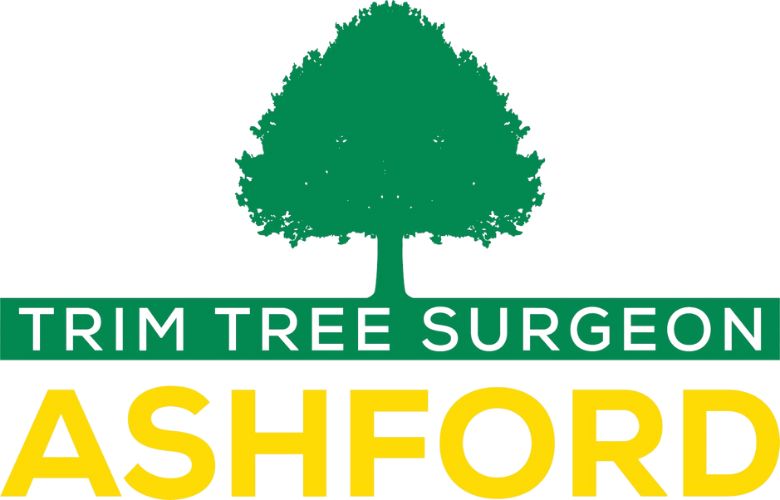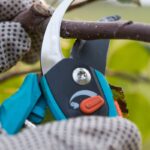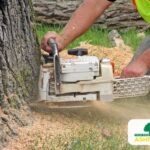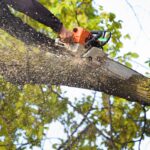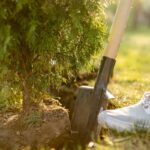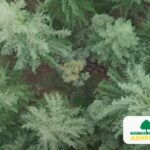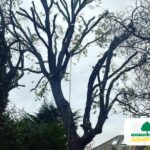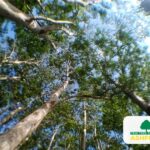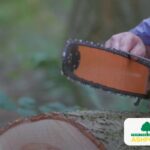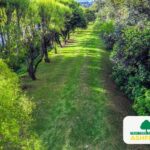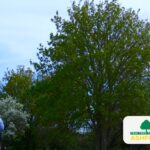When the stormy weather hits and the winds start to blow, your once majestic trees can become a potential hazard. With branches swaying precariously, it’s essential to know how to handle storm-damaged trees before an emergency occurs.
Emergency tree services in the UK can help. These experts have the knowledge and tools needed to evaluate the damage, remove or prune damaged branches, stabilize and support weakened trees, and return your outdoor space back to normal. They can also assess potential hazards and take steps to prevent further damage.
Plus, they can help you with insurance claims and documentation. For fast action and professional tree care, trust in emergency tree services when it comes to dealing with storm-damaged trees.
Assessing the Damage
Take a close look at the storm-ravaged trees, assessing the extent of their damage and determining the best course of action.
Begin by assessing tree stability to determine if they pose an immediate danger. Look for signs of leaning or major trunk damage which could indicate instability.
Next, evaluate root damage by inspecting the soil around the base of the tree for any uprooting or exposed roots. Check for cracks in the soil or heaving, which may show extensive root damage.
Also, inspect the canopy for broken or hanging branches that could potentially fall and cause harm.
Once you have thoroughly assessed the damage and determined which trees are unstable or severely damaged, you can then move on to discussing tree removal and pruning as necessary to restore safety and preserve healthy trees in your landscape.
Tree Removal and Pruning
When dealing with storm-damaged trees, it’s essential to prioritize the safe removal of fallen or uprooted trees. This not only prevents further damage but also ensures the safety of those and property around them.
Pruning damaged branches is also important for tree health and safety, encouraging new growth and removing potential hazards.
Lastly, disposing of tree debris properly helps keep the environment tidy and stops the spreading of diseases or pests.
Safe removal of fallen or uprooted trees
Don’t be caught off guard by the aftermath of a storm – ensure the safe removal of fallen or uprooted trees to protect your property and loved ones. When dealing with storm-damaged trees, it’s important to use the correct tree removal techniques to avoid further damage and accidents.
First, assess the situation and decide on the best approach for removing the fallen or uprooted tree. Take into account factors such as its size, location, and proximity to structures or power lines. Also, ensure root preservation during the process to minimize disruption to the surrounding landscape. By following these precautions, you can effectively remove the tree while preserving its roots and minimizing any potential negative impact on your property.
Now, let’s move on to pruning damaged branches for tree health and safety without compromising its overall structure and growth.
Pruning damaged branches for tree health and safety
Pruning damaged branches helps maintain the health and safety of the tree, ensuring its long-term growth and overall structure. After a storm, it’s essential to assess any compromised branches and use proper pruning techniques. This includes making clean cuts just outside the branch collar to promote healing and prevent further damage.
It’s important to consider branch strength when deciding which ones to prune. Weak or broken branches should be removed to reduce the risk of falling and causing harm. Additionally, pruning damaged branches allows for better air flow and sunlight penetration through the canopy, aiding healthy growth.
Promptly addressing these issues can help the tree recover effectively and minimize any potential hazards caused by storm damage.
Now, having pruned damaged branches for tree health and safety, let’s discuss the proper disposal of tree debris in the next section.
Proper disposal of tree debris
To properly dispose of tree debris, you can hire a professional tree removal service that guarantees 95% of the debris is recycled, reducing environmental impact and promoting sustainability. They have the expertise and equipment to deal with large amounts of tree waste promptly.
The correct recycling methods are implemented, such as chipping branches into mulch or turning them into firewood. The remaining wood pieces are taken to recycling centres where they can be used for various purposes, including creating biomass fuel or composting.
Composting is a key process that breaks down organic matter into nutrient-rich soil amendment. Composting tree debris not only reduces waste but also contributes to healthier soils and plant growth.
With appropriate disposal practices in place, you can now focus on stabilising and supporting storm-damaged trees to avoid further damage.
Tree Stabilization and Support
When it comes to storm-damaged trees, we can help you stabilise and support them. Tree bracing and cabling are important techniques we use to ensure the safety and longevity of your damaged trees.
Bracing involves installing steel rods or cables in the tree’s canopy and trunk, providing extra support to weak or split branches. This helps stop further damage during storms or strong winds.
Tree cabling is another method used to reduce pressure on weak branch unions by connecting them with flexible steel cables. By using these stabilisation techniques, we can help your trees recover from storm damage and stop future hazards.
Now you know how we stabilise storm-damaged trees, let’s move on to discussing emergency tree care and restoration.
Emergency Tree Care and Restoration
If you have storm-damaged trees that are still salvageable, emergency tree care is essential. Trimming and shaping can help restore their structure. Providing necessary health treatments and fertilization will aid their recovery and well-being.
Emergency tree care for damaged but salvageable trees
You can effectively provide emergency care for storm-damaged trees that are still salvageable. Here are a few important steps to consider when it comes to tree rehabilitation and preservation:
Assess the damage: Carefully inspect the tree and determine the extent of the damage. Look for broken branches, split trunks, or uprooted roots.
Remove hazards: Safely remove any hanging branches or debris that may pose a risk to people or property.
Prune damaged limbs: Trim broken or dangling branches using proper pruning techniques to promote healing and prevent further injury.
Support weak areas: Install support systems like cables or braces to stabilize weakened sections of the tree.
Water and fertilize: Provide adequate moisture and nutrients to help the tree recover from stress.
By following these steps, you can give your storm-damaged trees a better chance at survival.
Now let’s move on to discussing tree trimming and shaping to restore their structure.
Tree trimming and shaping to restore tree structure
If you have a storm-damaged tree which is still salvageable, there are tree trimming and shaping techniques that can help restore its structure.
Trimming involves selectively removing branches to improve the overall appearance and health of the tree. It reduces weight on damaged branches, prevents further damage, and encourages new growth.
Shaping techniques focus on pruning specific areas to maintain or create a desired shape for the tree. This restores balance and symmetry while ensuring the tree’s long-term health.
By assessing the damaged areas and using proper pruning methods, you can promote healthy growth and enhance the tree’s aesthetic appeal.
Once you have restored its structure, it’s important to move on to the next step: addressing any potential issues with tree health treatments and fertilisation.
Tree health treatments and fertilization
To ensure your tree’s long-term health, it’s essential to provide tree health treatments and fertilisation. Regular tree health assessments are crucial in identifying any potential issues or diseases that may be affecting your trees.
These assessments involve a thorough examination of the tree’s overall condition, including its trunk, branches, leaves, and roots. By carrying out these evaluations, arborists can decide on the best course of action to address any problems and promote the tree’s vitality.
Tree fertilisation techniques play a vital role in supplying essential nutrients to support healthy growth. Arborists use specific fertilisers that contain a balanced blend of macronutrients and micronutrients necessary for optimal tree development. These fertilisers are applied at strategic times throughout the year to maximise their effectiveness.
By implementing proper tree health treatments and fertilisation techniques based on regular assessments, you can significantly boost your tree’s overall well-being. This will help it withstand future storms or other environmental stressors more effectively.
Moving onto ‘hazard assessment and risk mitigation’, let’s now evaluate potential risks posed by storm-damaged trees without delay.
Hazard Assessment and Risk Mitigation
When assessing the hazards and mitigating risks of storm-damaged trees, it’s essential to envision potential dangers and take action quickly.
Start by identifying any potential hazards, such as hanging branches or a leaning trunk, and any nearby structures or power lines that could be affected if the tree were to fall.
Develop a plan for risk management, which may involve pruning or removing unstable branches, bracing a weakened trunk, or complete tree removal if necessary.
Safety must be prioritized, and professional help should be sought when needed.
Taking prompt action to address these hazards and implementing risk mitigation strategies can help prevent further damage and ensure the safety of your surroundings.
Now let’s transition into the subsequent section about ‘insurance claims and documentation’.
Insurance Claims and Documentation
Now you’ve assessed the hazards and reduced the risks associated with storm-damaged trees, it’s time to turn your attention to insurance claims and documentation.
Knowing your insurance coverage is vital for making sure you get the right financial help for tree removal or repair costs. The claims process can be complex, but with good documentation, you can navigate it smoothly.
Make sure to collect all the necessary information, such as photographs of the damage, estimates from certified arborists, and any other supporting documents required by your insurance company.
It’s advisable to notify your insurer as soon as possible after the storm, giving them detailed information about the incident. By taking these steps and being proactive in documenting the damage, you’ll increase your chances of a successful insurance claim and get the financial assistance needed for restoring your property.
Frequently Asked Questions
What should I do if a storm-damaged tree is leaning towards my house?
If a storm-damaged tree is leaning towards your house, safety should be the priority. Do not try to remove it yourself, instead hire a professional tree service specializing in storm damage near residential areas. They have the right expertise and tools to safely take down the tree without any further damage.
This will protect your home and reduce the risks associated with dealing with storm-damaged trees.
Can storm-damaged trees be saved or is removal always necessary?
Storm-damaged trees can sometimes be salvaged, but it depends on the severity of the damage. It’s essential to evaluate the storm damage carefully before coming to a decision about whether removal is necessary.
Salvaging storm-damaged trees may require pruning or bracing to assist them in recovering and regaining stability. However, if the tree is severely weakened or poses a safety hazard, removal could be the best option.
Consulting with an experienced arborist will guarantee you make an informed judgement about what’s best for your tree and property.
How long does it typically take for a newly planted tree to recover from storm damage?
Recovery time for a newly planted tree after storm damage? Not quite a blink of an eye.
It all depends on the severity of the damage and correct tree care. Generally, it can take several months to a few years for a young tree to fully recover.
Patience and diligent care are key in helping your tree back to its former glory.
Are there any preventative measures I can take to minimize storm damage to my trees?
To minimize storm damage to your trees, there are several preventative measures you can take.
- Pruning dead or weak branches can improve the tree’s overall strength.
- Providing proper tree maintenance, such as watering and fertilizing, can enhance its resilience against storms.
- Installing sturdy support systems like cables and braces can also help prevent damage during high winds.
Taking these preventative steps can significantly reduce the risk of storm-related harm to your trees.
What should I do if a storm-damaged tree is blocking a road or posing a danger to public safety?
If a storm-damaged tree is blocking a road or posing a danger to public safety, you must act quickly. Ensure everyone stays away from the area for their own safety. Then, contact emergency tree services specialising in such situations. They will assess the risk and safely remove the tree, minimising public safety concerns and reopening the road as soon as possible. Prioritize safety and seek professional help when needed.
Thank you for reading our post, please reach out to us if you enjoyed the article or if you want to explore some of our service please see below:
